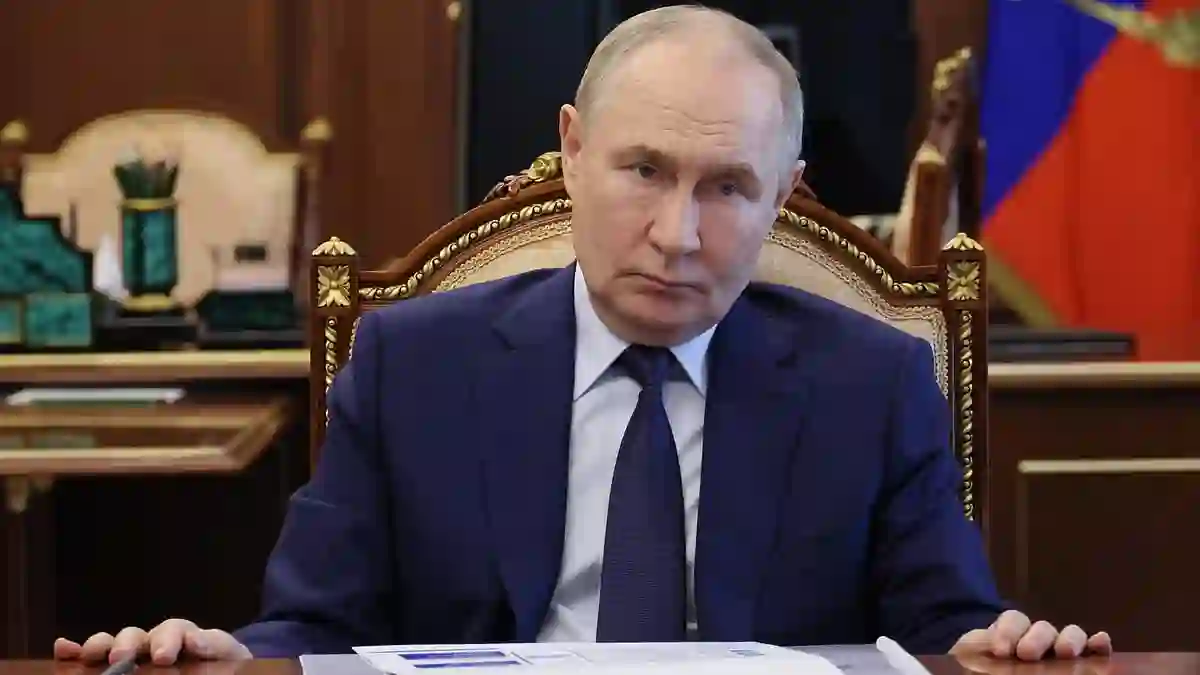Just a few months ago, it looked like Ukraine’s fight against Russia was on its last legs.
The global mood was grim, and the political winds in Washington didn’t seem to be blowing in Kyiv’s favor.
But now, after a sharp turnaround that began with a surprising phone call on America’s Independence Day, the dynamics have dramatically changed—and not necessarily in a comforting way.
Trump’s Shocking July 4th Call to Zelensky
According to a Financial Times report, on July 4th, former President Donald Trump, now back in office, dialed up Ukrainian President Volodymyr Zelensky and asked an astonishing question:
“Can you hit Moscow? Can you hit St. Petersburg, too?”
Zelensky didn’t flinch. His answer was blunt:
“Absolutely. We can, if you give us the weapons.”
That exchange seemed to spark a flurry of action.
Within days, Trump pledged billions of dollars in new military support for Ukraine and delivered a stern 50-day warning to Russian President Vladimir Putin.
His message? Make peace—or face crushing secondary sanctions aimed at any country still propping up the Russian economy through oil and gas trade.
Will Putin Blink—or Push Harder?
There’s skepticism, sure. But some experts, including the article’s author, think this could actually bring about a ceasefire.
Still, even if it does, that might only be the start of something worse.
Trump’s timeline gives Russia time to launch a fierce summer offensive.
If they make gains, they’ll come to the table from a stronger position, while Ukraine—exhausted and bloodied—might be forced to compromise.
What a Trump-Led Deal Could Look Like
Under a Trump-brokered peace deal, Putin might be allowed to keep Crimea and maintain control over about 20% of Ukrainian territory seized during the war.
That would be a hard pill to swallow for many—but the real game-changer could be Trump’s threat to unleash Ukraine’s military capabilities even further.
Imagine a scenario where Kyiv is handed long-range weapons capable of hitting major Russian cities.
That possibility alone could force the Kremlin to reconsider its options.
Russia’s Economy: A Ticking Time Bomb
Russia may be charging ahead militarily, but economically, it’s in a fragile place.
Roughly a quarter of its GDP relies on fossil fuel exports. If Trump’s secondary sanctions scare off major buyers like China or India—or even just get European countries to switch suppliers—the economic fallout could be huge.
Plus, if Trump really goes through with ramping up Ukraine’s strike power, allowing them to hit deep inside Russian territory, it could change the war’s tone completely.
It’s not just about strategy at that point—it’s about survival.
A Ceasefire Could Be Just the Beginning
Here’s the twist: Even if this all leads to a ceasefire, that doesn’t mean peace.
In fact, it could lay the groundwork for an even larger conflict.
Russia’s economy has become so militarized that cutting defense spending could lead to collapse.
That puts Putin in a tight spot. With his grip on power tied to military strength, he might see more war—not less—as his only path forward.
Who’s Next on Putin’s Radar?
It’s not just the Baltics that should be worried.
While Estonia, Latvia, and Lithuania are the obvious next targets because they’re NATO members, there’s growing concern that Putin might first turn his sights south.
The South Caucasus—Armenia, Azerbaijan, and Georgia—are ripe for Russian pressure.
Armenia is cozying up to France and the EU. Azerbaijan is clashing openly with Russia.
And Georgia already has Russian troops occupying the breakaway region of Abkhazia.
Kazakhstan’s Russian Minority Could Be a Convenient Excuse
Then there’s Kazakhstan. With a significant ethnic Russian population, it wouldn’t take much for the Kremlin to fabricate a reason to invade under the pretext of “protecting Russian citizens.”
It’s a strategy that’s been used before—and it could easily be used again.
Could China and Russia Coordinate Something Bigger?
All of this becomes even more dangerous when you factor in China.
NATO’s new Secretary-General, Mark Rutte, recently warned that if China were to invade Taiwan, it’s entirely plausible that President Xi Jinping would ask Putin to create a distraction in Europe.
In other words, China hits Taiwan, and Russia stirs chaos in Europe.
The idea is to split the West’s focus and resources, making it harder for the U.S. and its allies to respond effectively on either front.
The Real Flashpoint: Taiwan
Let’s not forget Taiwan—home to over 60% of the world’s most advanced semiconductors.
It’s a major geopolitical prize, and China sees it as standing in the way of their naval ambitions in the Pacific.
If Beijing makes a move, the U.S. will expect backup from allies like Japan, Australia, and the UK.
And just to add more fuel to the fire, don’t count out North Korea.
They could seize the moment to ramp up tensions with South Korea, creating yet another crisis point.
The Chilling Bottom Line
A ceasefire in Ukraine might sound like a win—but in this scenario, it could be just the quiet before an even bigger storm.
Between economic desperation in Moscow, strategic ambitions in Beijing, and a world full of old grudges and new weapons, the pieces are moving toward something far more dangerous.
In short, if this path holds, the end of one war might just be the beginning of the next.
And this time, it wouldn’t just be regional—it could go global.
